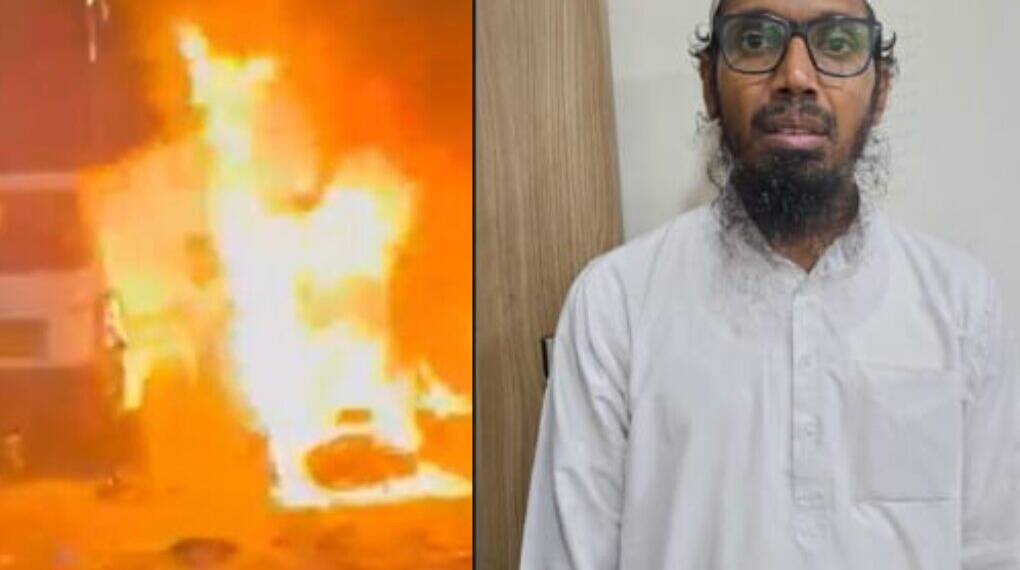A deadly explosion near Delhi’s Red Fort Metro Station on Monday, November 10, 2025, has plunged India’s capital into chaos and fear. At least ten people were killed and dozens more injured in what officials are calling one of the most significant security breaches in recent years. The blast occurred close to Gate No. 1 of the historic Red Fort, a symbol of Indian sovereignty.
While authorities have yet to confirm the cause of the explosion, early intelligence links the incident to a wider terror conspiracy stretching from Jammu and Kashmir to the National Capital Region (NCR). This comes amid revelations of a white-collar terror network involving medical professionals allegedly radicalized and recruited by splinter groups tied to Pakistan-based terrorist outfits.
The Faridabad Explosives Haul: A Chilling Discovery
Just hours before the Delhi blast, police in Faridabad, on the outskirts of the capital, recovered 350 kilograms of ammonium nitrate, detonators, and AK-47 rifles from a residential property linked to two doctors from Jammu and Kashmir — Dr. Adil Ahmad Rather and Dr. Mujammil Shakeel.
The discovery followed an investigation launched in late October, after posters supporting the banned Jaish-e-Mohammed (JeM) group appeared in Srinagar. CCTV footage led investigators to Dr. Rather, a faculty member at the Government Medical College in Anantnag, who was later arrested in Saharanpur, Uttar Pradesh. His interrogation led to the Faridabad raids.
Intelligence sources revealed that the doctors were part of a sleeper cell of Gajwat-e-Ul Hind, an ISIS-linked group seeking to carry out pan-India terror attacks. Police suspect that the Red Fort blast and the explosives haul are part of the same operational chain.
Doctors Turned Terrorists: The Rise of “White-Collar Jihad”
Investigators have uncovered a disturbing trend: the infiltration of educated professionals — including doctors — into militant networks.
According to counterterrorism analysts, this represents a “white-collar jihad” movement, where individuals with legitimate credentials are recruited to provide operational cover, handle logistics, and even develop chemical or biological weapons.
Dr. Rather and Shakeel reportedly received guidance from a radical mentor known as Dr. Omar, who reorganized the sleeper network after 2021. The group allegedly sought to create its own militant “tanzim” aligned with Lashkar-e-Taiba (LeT) and Jaish-e-Mohammed.
The Ricin Terror Plot: A Biochemical Threat
In a separate but parallel case, Gujarat’s Anti-Terror Squad (ATS) arrested another doctor, Ahmed Mohiyuddin Saiyed, for allegedly planning a ricin-based terror attack. Saiyed, who claimed to hold a medical degree from China, was found with castor oil (used to produce ricin toxin), handguns, and ammunition.
Authorities say Saiyed was in contact with Islamic State–Khorasan Province (ISKP) operatives through encrypted platforms like Telegram. His handler, identified as Abu Khadija, is believed to be operating from Afghanistan.
The Gujarat ATS revealed that the group had scouted locations in Delhi, Lucknow, and Ahmedabad, potentially targeting government buildings or crowded public spaces.
The Pakistan Connection: A Shadow Alliance
A classified Indian intelligence dossier, accessed by NDTV, recently revealed a covert alliance between Pakistan’s Inter-Services Intelligence (ISI) and regional terror groups — including LeT, JeM, and ISKP.
Officials believe the ISI’s objective is to destabilize India through asymmetric warfare, using both traditional militant cells and “soft network” operatives embedded in Indian institutions.
If the Delhi blast is confirmed to be Pakistan-backed, it could trigger a severe geopolitical escalation. Prime Minister Narendra Modi, following the April 2025 Pahalgam massacre and Operation Sindoor, had warned that any further act of terror would invite “decisive retribution.”
Operation Sindoor: India’s Red Line
Earlier this year, following the killing of 26 civilians in Pahalgam, India launched Operation Sindoor, a precision military campaign targeting terror infrastructure across the Line of Control (LoC) and deep inside Pakistan. The operation was paused on May 10 after extensive strikes destroyed multiple militant camps.
Modi called it a “temporary halt, not an end,” signaling India’s willingness to resume offensive measures if provoked again.
With the Red Fort blast reviving memories of the 2001 Parliament attack and the 2011 Delhi High Court bombing, Indian policymakers now face a grim question: Will Operation Sindoor resume?
Global Implications: A Warning for the World
The Delhi blast and associated arrests highlight how terrorism is evolving beyond borders, religions, and professions. From ammonium nitrate and RDX to biochemical agents like ricin, the tools of terror are diversifying — as are the people wielding them.
For the international community, this serves as a stark reminder that terrorism is no longer confined to war zones. Educated extremists, digital radicalization, and transnational funding pipelines are reshaping the landscape of global security.
As India intensifies its investigation and contemplates its response, the world watches — aware that the next terror threat may not come from the battlefield, but from behind a doctor’s coat or a laboratory door.








